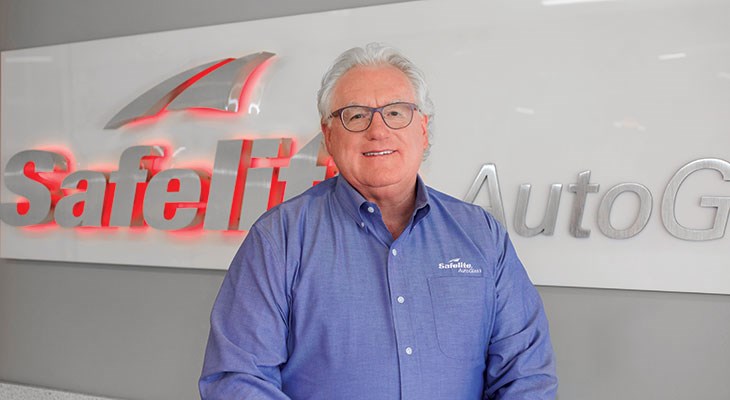Unlike many large corporations, Safelite Group is doing fewer acquisitions.
“Acquisitions today are still an important part of our growth, but it’s not a prominent part of our growth,” says President and CEO Tom Feeney, who has been with the organization since 1988.
Prior to 2010, growth was 60 percent organic, 40 percent acquisitive. Today, it’s 85 percent or 90 percent organic.
That’s not to say Safelite, which owns Safelite AutoGlass, isn’t buying companies. It has bought three — Glasspro, TruRoad and Auto Glass Specialists — in 2019. The largest of those is TruRoad, but Feeney says even at $130 million in revenue, it represents less than 5 percent of Safelite’s annual sales.
Safelite’s acquisition strategy is targeted to specific markets or states where the company needs fill-in business. It buys competitors that have attractive real estate, attractive brands, attractive talent or an attractive customer base. It pays cash and always buys 100 percent of ownership.
“We set a goal every year where anywhere from $30 to $50 million of new revenues come from acquired companies,” Feeney says.
The company also looks at three potential acquisitions for every one it does, and most owners are generational sellers who need to monetize their retirement or people who want to exit to do something different.
Stay focused
Feeney says keeping the associates, customers and sales retention in focus makes a lot of the other decision-making easier.
“Every acquisition we’ve done — and I bet you we’ve done, in my career at Safelite, probably a 100 or so — they’ve all been successful, meaning they’ve achieved the business cases that we established,” he says.
Those business cases are audited, until the acquisition is fully integrated into the business. This means establishing goals around sales retention, associate retention and customer retention, as well as following a guiding set of principles for why Safelite is acquiring that business.
Then, the company ensures those things are communicated clearly.
“Our feeling is that we stay very close to the business case that we set out to achieve,” Feeney says. “We meet weekly to discuss what’s happened with that acquisition, how is the integration going, what new issues have emerged, what are our actions and what’s our plans for this next week. We keep a very high pace on the integration efforts and only start to back off those weekly update meetings when we’re sure that everything is now moving in the way we expect it to.”
While those plans need to be adjusted because you can’t possibly ask all the right questions ahead of owning the business, Feeney says, “if you do your pre-close work comprehensively enough, the significance of those things that you learn are less troublesome.”
In addition, it’s important to avoid the trap of the arrogant acquirer, Feeney says. You need to be open to new ideas from the acquired company.
“In just about every acquisition, we’ve learned one or two things that we can incorporate into our business,” he says. “We give a lot of credit to the acquired companies for teaching us something new. We play that up, so it isn’t always a one-way street.”
Move quickly
Every acquisition gets its own timetable, but Feeney cannot imagine any acquisition taking more than six months to integrate.
“When we acquire a smaller business, say, in that $5 million range, we do what’s called the lightning strike and we will have that fully integrated in two to three weeks,” he says.
A speedy integration allows you to communicate more effectively with people and help them focus on the opportunities that come with the changes, while also making faster decisions, Feeney says.
“From my experience, the organizations that try to convince themselves that longer is better, I think, are making a mistake,” he says. “Speed is an asset in any acquisition that requires leadership involvement, participation and visibility.”
The employees like to know what’s going to happen, even when they’re not in total alignment with the plan. Feeney says, “Living in an unsure world is more painful.”
Full transparency is also critical, which also means living up to the commitments you make, he says.
“If the acquired company thinks for one minute that they can’t trust you, you’re pulling a fast one or you’re not being totally transparent,” Feeney says. “It’s very harmful to the overall objectives of the acquisition.”
The one time Safelite moved more slowly, Feeney feels the company faced more challenges.
When it bought New England’s Giant Glass three years ago, Safelite decided to keep the Giant brand alive for three years, which was too long.
“With the TruRoad acquisition, which is even better known than the Giant brand, we’re using that Giant experience and saying we can’t keep them alive that long,” he says. “We’ve got to integrate them in. Because of the money we’re spending on advertising, it’s foolhardy to keep them out there.”




